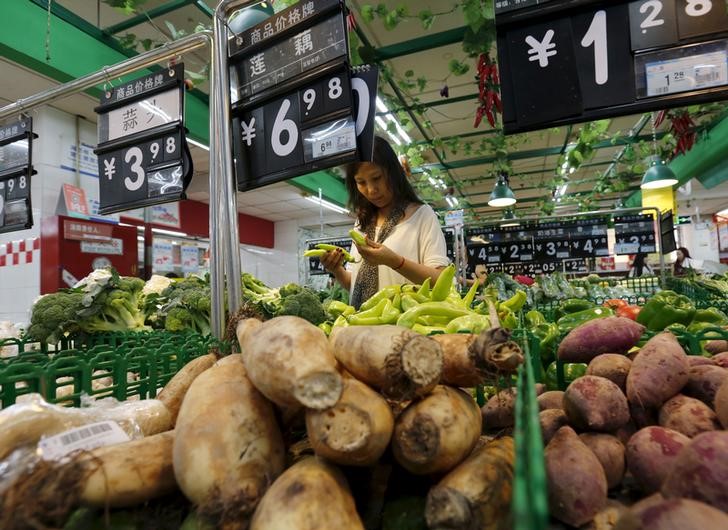By Koh Gui Qing
BEIJING (Reuters) - China is under growing pressure to further stimulate its economy after disappointing data over the weekend showed another heavy fall in factory-gate prices and a surprise slump in exports.
Producer prices in July hit their lowest point since late 2009, during the aftermath of the global financial crisis, and have been sliding continuously for more than three years.
Exports tumbled 8.3 percent in the same month, their biggest fall in four months, as weaker global demand for Chinese goods and a strong yuan policy hurt manufacturers.
"Policy focus is definitely the (producer) deflation at this stage," said Zhou Hao, economist at Commerzbank AG (XETRA:CBKG) in Singapore.
He said China's central bank would likely need to further cut interest rates again, having already cut four times since November in the most aggressive easing in nearly seven years.
The gloom may only deepen in the coming week with a raft of economic data forecast to show renewed weakness in factories, investment and domestic spending.
The world's second-largest economy is officially targeted to grow at 7 percent this year, still strong by global standards, but some economists believe it is growing at a much slower pace.
Economists expect the central bank to cut rates by another 25 basis points this year, and further reduce the amount of deposits banks must hold as reserves by another 100 basis points, according to a Reuters poll last month.
The producer price index fell 5.4 percent from a year earlier, the National Statistics Bureau said on Sunday, compared with an expected 5.0 percent drop. It was the worst reading since October 2009 and the 40th straight month of price decline.
Falling producer prices are worrying because they eat into the profits of miners and manufacturers and raise the burden of their debts. China's corporate debt stands at 160 percent of gross domestic product, twice that of the United States, according to a Thomson Reuters study of over 1,400 firms.
In line with the sluggish economy, annual consumer inflation remained muted at 1.6 percent despite surging pork prices, in line with forecasts and slightly higher than June's 1.4 percent.
CHALLENGING SECOND-HALF
A cooling housing market, uneven exports and weak investment have cooled annual economic growth, which will be slowest in a quarter of a century even if it hits Beijing's target this year.
A strong yuan policy - designed in part to support domestic consumption and help Chinese firms to borrow and invest abroad - is hurting exporters. Trade data on Saturday showed depressed demand from Europe and the first drop in exports to the United States, China's biggest market, since March.
Chinese firms have laid off workers for 21 consecutive months as they slash prices to a six-month low to attract customers, an official survey showed this month.
China's turbulent stock markets, which have fallen by almost a third since peaking in June, also add a new sense of urgency for top officials as they try to ensure a stable financial system can fund Beijing's efforts to rekindle economic growth.
Yet, even the central bank has warned that looser policy may not be effective in lessening the pain felt by companies.
Companies are holding back on spending amid a reluctance by banks to lend due to rising bad debts.

"Maintaining a growth rate of 7 percent in the second half of the year will be a challenge," ANZ Bank said in a note at the weekend. "Monetary policy will need to become more supportive."